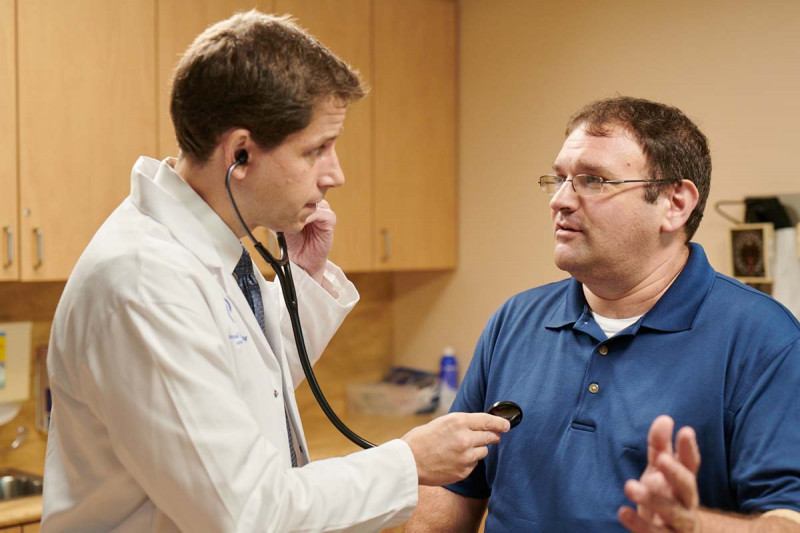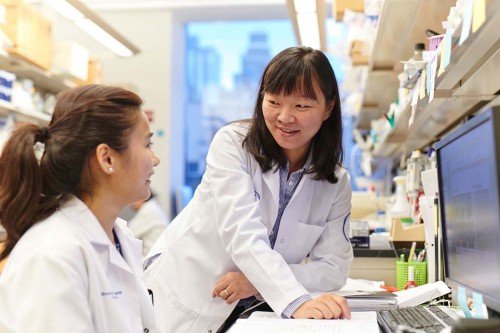
Fear of the cancer coming back is common among people who’ve recently been treated for soft tissue sarcoma. Most recurrences tend to happen within two years of diagnosis. It may be exhausting to think about but preparing yourself with some important information may help you feel less overwhelmed.
We spoke with a few of Memorial Sloan Kettering’s sarcoma experts about what they believe sarcoma survivors should know about recurrence.
1. Soft tissue sarcoma can recur in different areas of the body.
One of the most important things to know about sarcoma recurrence is that it can come back in the same location or in a different area of the body, says soft tissue sarcoma surgeon Aimee Crago. Some sarcoma recurrences are local. This means the sarcoma has come back in the same location as the original tumor. Other sarcomas are distant (also called metastatic sarcoma). This means the disease has spread to another part of the body.
A third type of recurrence, called regional recurrence, is much less common and refers to sarcoma that has spread to nearby tissues such as the lymph nodes.
Treatment recommendations vary based on the exact location of the recurrence as well as which sarcoma subtype you have. The treatment options may include surgery, drug therapy, radiation therapy, or a combination of these.
“No matter what, I’d encourage anyone with a sarcoma to make sure they are being treated by a multidisciplinary team of experts,” advises William Tap, Chief of the Sarcoma Medical Oncology Service. “People with sarcoma benefit most when they have the expertise of many different sarcoma specialists on their team.”
2. You may be your own best sarcoma screening method.
Many survivors have regular screening exams to check for a return of the disease. That said, according to Dr. Crago, about 50% of sarcoma survivors with a local sarcoma recurrence discover it themselves. This is especially true among those whose tumors recur in the arms or legs, where growths are more noticeable.
“A new lump near the surgical site is often the first sign that a tumor has recurred,” says Dr. Crago. “If you find a lump or see other changes in your skin near the location of your first tumor, let your doctor know right away.”
Metastatic sarcoma, on the other hand, happens most often in the lungs, and you will not be able to detect it on your own. If you are at risk for a metastatic sarcoma recurrence, routine follow-up visits are essential and will include chest X-rays or CT scans. You may need abdominal, pelvic, or bone scans depending on which type of sarcoma you had.
“While most sarcoma recurrences happen in the first two years after diagnosis, there are types of sarcoma that can recur many years later,” Dr. Crago adds. “Long-term follow-up with your doctor can be very important, sometimes for decades.”
3. Anxiety about a sarcoma recurrence is normal.
If the idea of a recurrence makes you anxious, you’re not alone. Whether you’re worried about an upcoming scan or coping with the stress of treatment for a recurrence, feelings of anxiety, anger, distress, and fatigue are normal, says Barbara Mitchell, a social worker from MSK’s Soft Tissue Sarcoma Disease Management Team.
“Scans are one of the most common sources of anxiety for people with sarcoma,” Ms. Mitchell adds. “Most people are anxious before a scan, even a routine scan. It can be hard for someone to imagine a day when they’ll stop worrying about the next scan. However, there are sarcoma survivors who do get to a place where they’re able to enjoy and be fully immersed in their life. The anxiety is still there, but it’s not as present.”
Get advice from our experts on coping with anxiety about scans and procedures.
4. You know so much more about sarcoma the second time around.
There are some important distinctions between being newly diagnosed with sarcoma and finding out you have a recurrence. With a recurrence, there’s so much you already know. You have established relationships with a care team and a general idea of what treatment will be like. “You know yourself as a patient now,” says Ms. Mitchell.
If you’ve been told that you have a recurrence, Ms. Mitchell advises taking a moment to examine what made you feel supported the first time. For some people, it’s family and friends. For others, it may be art, music, spirituality, or a trusted therapist. “Even though a recurrence is not what you were hoping for,” Ms. Mitchell says, “you have an established basis for how to cope. And that can be empowering.”
5. Consider a clinical trial for an advanced sarcoma recurrence.
There are many commonly used treatments for people with advanced disease. These include various drugs and approaches to radiation therapy.
You may also want to consider a clinical trial for soft tissue sarcoma. Clinical trials are research studies that test new therapies to see how well they work. In some cases, enrolling in a clinical trial at MSK can give you access to a groundbreaking treatment years before it gains approval from the US Food and Drug Administration.
MSK has among the largest number of clinical trials for sarcoma in the world, including an extensive immunotherapy program specifically for soft tissue sarcoma. “Clinical trials are where the rubber meets the road, where cutting-edge science converges with patient care,” says Dr. Tap. “For a patient, clinical trials are really about options. And we have a lot of options we can offer people with advanced sarcoma.”
Learn how to join a clinical trial
6. Seek out a community of people affected by sarcoma.
Because sarcoma is rare, chances are you don’t have many sarcoma survivors in your life. “People with sarcoma typically aren’t having the experience of meeting others with the disease or survivors in their communities,” Ms. Mitchell says.
This may leave you feeling pretty lonely at times, but there are ways to ease the sense of isolation and find support. Consider connecting with other people affected by sarcoma. Talk to a social worker from your cancer center about resources that might be helpful or get in touch with an advocacy organization.
MSK offers an online virtual support group for MSK patients diagnosed with sarcoma. Run by Kristine Naputo and fellow social work Linda Mathew, the group is open to MSK patients.










